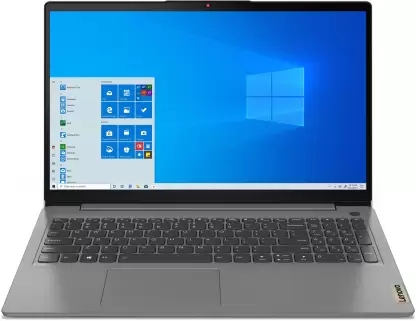
It’s crucial to take into account a number of aspects when choosing the finest laptop for your needs in order to acquire a machine that meets your wants and budget. To accommodate varied needs and tastes, laptops are available in a variety of designs, sizes, and configurations. You may successfully traverse the laptop market with the aid of our thorough guide. These are the main elements to think about:
1. Purpose and Usage

Start by determining your laptop’s principal use case:
- General Use: A simple laptop will do for online browsing, email, document editing, and multimedia consumption.
- Gaming: If you enjoy playing video games, seek for a laptop with a dedicated graphics card, a screen with a high refresh rate, and enough processing power.
- Content Creation: Look for a laptop with a dedicated graphics card, a screen with a high refresh rate, and enough processing power if you love playing video games..
- Business or Productivity: Business-oriented laptops frequently include strong security protections, extended battery lives, and portable, light designs.
- Student: Students should choose computers that are lightweight, inexpensive, and have long battery lives.
2. Operating System

According to your tastes and software needs, pick the operating system:
- Windows:The majority of laptops run Windows, which provides a wide choice of program compatibility and a comfortable user interface.
- macOS: MacOS, which is used on Apple computers, is renowned for its user-friendly interface and seamless compatibility with other Apple products.
- Linux: Choose a laptop that supports Linux distribution if you’re computer skilled and need particular Linux-based software..
3. Size and Portability
11 to 17 inches is the common range for laptop sizes. Consider:
- Screen Size:Larger displays (15-17 inches) provide greater viewing experiences but may be less portable than smaller screens (11-13 inches).
- Weight: For regular travelers and students, lighter computers are more convenient to transport.
- Build Quality: For long-term dependability, look for a sturdy construction made of materials like aluminum or magnesium..
4. Performance

The laptop’s performance depends on several factors:
- Processor (CPU): Choose a Processor that can handle the workload you have. While hard activities need Core i7 or Ryzen 7 CPUs, fundamental tasks may be completed with an Intel Core i3 or AMD Ryzen 3.
- RAM: For fast software execution and seamless multitasking, make sure you have adequate Memory (8GB or more).
- Graphics: While integrated graphics are adequate for routine work, a laptop with a dedicated GPU from Nvidia or AMD is recommended for gaming or content production.
- Storage: Choose between a quicker but more costly SSD and a bigger but slower HDD (Hard Disk Drive). Some computers include both in a single package (SSD for speed, HDD for storage).
5. Battery Life

Think about how portable you need things to be and how crucial a long battery life is. Laptops with a battery life of 8 to 10 hours are often the best for usage while traveling.
6. Display Quality

A good display enhances your overall computing experience:
- Resolution: Higher resolutions (Full HD, 4K) offer sharper visuals, important for content creation and media consumption.
- Panel Type: IPS panels provide better color accuracy and viewing angles compared to TN panels.
- Refresh Rate: Gamers may prefer laptops with higher refresh rates (120Hz or more) for smoother gameplay.
7. Keyboard and Touchpad

Comfortable typing and accurate touchpad navigation are crucial for productivity. Consider laptops with well-spaced keys, good key travel, and responsive touchpads.
8. Connectivity Options
Check the laptop’s ports and connectivity options:
- USB Ports: Ensure it has enough USB ports (USB-C, USB-A) for your peripherals and devices.
- HDMI/DisplayPort: For connecting to external displays or projectors.
- Wi-Fi: Look for laptops with the latest Wi-Fi standards (Wi-Fi 6) for faster wireless connectivity.
9. Audio Quality
Evaluate the laptop’s speaker quality if you plan to use it for multimedia or video conferencing. External speakers or headphones may be needed for better audio.
10. Webcam and Microphone
In the age of remote work and video conferencing, a good webcam and microphone are essential for clear communication.
11. Build and Design
Consider the laptop’s aesthetics and build quality. A premium build may enhance the overall experience and durability.
12. Brand and Warranty
Choose reputable brands known for reliability and customer support. Warranty coverage and customer service should also factor into your decision.
13. Budget
Decide on a price range and stay within it. You can find acceptable solutions at various price points because laptops exist in a variety of pricing ranges.
14. Upgradability
Verify whether the laptop can accept RAM or storage upgrades, which can increase its lifespan and enable it to meet changing demands.
15. Reviews and Recommendations
For information on the performance and dependability of the laptop in actual use, read reviews from reliable sources and ask for recommendations from friends, coworkers, or online groups.
16. Eco-friendliness
If sustainability is an issue, look at laptops with energy-efficient parts and eco-friendly certifications.
In conclusion, selecting the finest laptop requires a comprehensive evaluation of your requirements and preferences in relation to a variety of factors, including performance and mobility. You can make an informed choice and choose a laptop that will serve you well for years to come by taking these things into account and conducting careful research.






